Paragon Innovations Blog
Engineering, business, and startup topics
- Friends and Families
- Credit Cards
- High Net Worth individual(s)
- Crowd Sourcing
- Angel Investor Groups
- Venture Capital
- Public (IPO)
- Others (credit cards, banks)
- A brief title slide with one graphic of the company’s logo or an image that depicts your product’s vision.
- An agenda slide that covers what will be presented within the pitch.
- An Opportunity/Problem/Pain Slide that addresses the opportunity or problem within your product’s applicable market(s).
- A Solution Slide that presents your product’s intended use and advantages.
- A Customers Slidethat defines the specificities of your product’s intended audience and potential users.
- References should be included within this slide for increased credibility
- A Customer Testimony Slide can be incorporated if your product has already been introduced into the market.
- A competition or Alternatives Slide is a crucial aspect of a pitch deck. Competitors and alternatives show that similar products are in demand, and you will have the opportunity to provide evidence of why your product is set above the rest.
- An Unfair Advantage Slide presents whyyour product, strategy, team members, or industry relationships give you an “unfair” advantage over others.
- A Development Team introduces the strategy of your development team.
- A Market Size Slide presents the economic environment surrounding your product.
- Use specific data and credible sources
- A Market Research Slide talks about the advocates, key persons, and speakers that can clearly communicate the advantages of your product
- A Revenue Model Slide addresses costs, margins, and expected net profit of initial and volume production.
- Use examples for sales projections and price points.
- A Marketing Strategy Slide defines advertising avenues for your product likeSEO (search engine optimization), Adwords, print magazines, newspapers, events. Local or national?
- A Distribution Methodology Slidedefines the distribution avenues of who and how your product will be shipped.
- A Use of Funds Slidedefines how fundraised monies will be allocated in areas like product development, marketing, facilities, salaries, advertising, utilities, and so forth.
-
-
- It is encouraged that inventors include a modest salary so that investors may see that you are vested in the company/product. 10 – 20% should also be included for any revisions throughout the process.
-
-
- A Management Team Slideidentifies important individuals, consultants, and employees within the project.
- A Financials Slide should provide top-level financials, and you should be prepared for more detailed financials.
- A 3-5 year profit and loss projection should be included.
- Back-up slides should include P&L / Cash flow / Balance Sheet for the same period.
- An Exit Strategy Slide provides information on your strategic exit. Do you intend to sell the company, initiate an IP, or produce regular dividends to shareholders?
- A Board of Directors Slide is optional to include for very new startups.
- A Milestones/Schedule Slide defines set dates for goals after funding is provided.
- A Roadmap Slide allows investors to visualize the “big picture” of the long-term evolution of your product. This includes product upgrades, accessories added, etc.
- The Next Steps and the Call-to-Action Slide tells investors how they can get involved in the next steps of the project.
- Backup Slides include more supportive detail and data regarding first 10 slides.
- Information on back-up slides should be well-sourced and referenced.
- Federal Communications Commission (FCC)
- Industry Canada (IC)
- Conformité Européenne (CE)
- Electromagnetic Compatibility (EMC)
- Risk evaluation. Can you identify any potential negative impacts that your product may have?
- Risk assessment involves research surrounding prevention of potential hazards.
- Option trade-off studies. How does your device measure up to alternative solutions on the market?
- Trade-off studies can help you evaluate if there are other cost-effective or optimized solutions to incorporate into your device.
- Initial Human Factors Evaluation. How will users interact with your device?
- Human factor research includes how users will perceive and navigate your device.
- Opportunity Finding. How can you generate ideas for opportunity?
- It’s important to determine possible opportunities that your device may have including markets, add-ons, and synergies.
- User Research. What demographic will your device serve best? Is your device an effective solution to a problem that users are currently facing?
- User research is a comprehensive way to identify the behavior, motivation, and needs of your audience.
- What size/shape will the device be?
- How will the product be powered?
- What are the manufacturing costs of the device?
- Is this type of product in demand and/or does it exist?
- How much will consumers be willing to pay for the product?
- What features are consumers looking for in this type of device?
- SWOT Analysis
- Find the strengths, weaknesses, opportunities, and threats (SWOT) of your device’s design and work through hypothetical approaches to foreseen scenarios.
- User Research
- Basic user research on your device’s intended target audience can provide developers with keen consumer insights regarding patterns, habits, and desires.
- Opportunity Finding
- Missed opportunities can be detrimental to the success of a project. One early way to generate ideas for opportunity is to play your own devil’s advocate. Acting as a naysayer of your own product can help you spot holes and places for improvement in your concept.
- Research and Development
- For early processes of research and development, designers should research technologies and processes that are applicable to their design process.
- Initial Human Factors Evaluations
- Human factors and usability evaluation focuses on the interaction between people and the devices they use. How will consumers interact with your device?
- Project Details
- In the early development stages, developers should become knowledgeable in processes, production methods, quantities, and certification requirements to ensure a successful product deployment.
- Increasing pressure to lower prices
- Increasing turnover in your sales force
- Fewer inquiries from prospective clients
- Clients systematically suggesting product changes
- Competitors exiting the market
- Idea generation
- Idea screening
- Concept testing
- Business analysis
- Product development
- Test marketing
- Commercialization
- Review of market performance
- Retain as much control of your product as possible
- Implement checks and balances to reduce risk
- Hire specialized engineers
- Avoid putting all of your eggs in one basket
- Act as a manager during the process to save cash
- Refrigerators
- Microwaves
- Home security systems
- Cars
- Alarm clocks
- Coffee machines
- Climate control systems
- Entertainment systems
- IoT SCADA systems can analyze product locations, system tasks, and machine wear in real time, allowing your assembly line to automatically make adjustments that best optimize your plant’s physical capacities
- IoT industrial machinery can identify breakdowns in internal components or assembly chains, allowing you to make repairs without having to resort to trial and error
- “Smart” GPS systems can help truckers analyze traffic and road conditions in real time, allowing you to decrease your shipping and delivery times
Phase 3: Fundraising
Paragon Innovations’ Series:
12-Stage Product Development Process
From Start to Success
Paragon Academy’s second module centered around how inventors can effectively research their product development process. In the series’ next phase, the Vice President of Paragon Innovations, Mike Wilkinson, narrows down the process of financially backing a project with assistance from guest speaker, Blake Petty, Executive Director of the Aggie Angel Network.
Where Should Funds Come From?
Mike comments that “There are plenty of other fundraising opportunities, from debt financing to private equity to crowdsourcing to IPO’s [initial public offering].” Common financial sources used to back a product development process include:
After family and friends, a lucrative fundraising avenue that inventors should investigate are angel investors. Blake defines angel investors as “Private investors who want to contribute in an equity fashion, invest in brand new, usually technology-based businesses.” Blake continues to say that angel networks can be found throughout the nation and that some angels can invest up to $500k individually.
What is a Pitch Deck?
Raising funds for your product revolves around the ability to communicate the value of an inventor’s solution to an audience. Also known as an elevator pitch, a pitch deck is a critical organizational tool to effectively translate the value of a product. “It's the 10, 20, 30 rule,” says Blake, summarizing Guy Kawasaki’s tips for a successful pitch deck, “It's a 10-slide maximum, 20 minute -maximum, and 30-point font.” Blake explains that a slide deck is a convenient way for inventors to convey pertinent aspects of their product in a visual format, without overwhelming their audience with too many fine details.
Slide Deck Contents
The purpose of a pitch deck is to provide potential investors with succinct information that can help visualize the benefits of a product, service, or goal. A successful slide deck will include 10 slides for the main presentation (not including backup slides), 30-point font to help limit the amount of information per slide, slide numbers and a master slide template throughout the presentation, and graphics where appropriate. The content of the slide deck should also include:
If you found the Fundraising Phase beneficial to your development process, stay tuned for Paragon Academy’s next module, Phase 4: Architectural and Requirements Gathering, where we provide a detailed explanation of compiling a requirements document.
About Paragon Innovations
Founded in 1990, Paragon Innovations is a leading provider of engineering and design service consultation. Paragon Innovations serves Fortune 500 companies and startups in developing turn-key product solutions. As a three-time winner of the Aggie 100 Award, Paragon Innovations’ skilled team is unmatched in their level of expertise and product management capabilities. Acquired by TTI, Inc. in 2021, Paragon Innovations joins the Exponential Technology Group (XTG), a collection of electronic component distributors and design engineering firms that collaborate to enable the development of modern technologies. XTG is a subsidiary of TTI Inc.’s Family of Specialists: TTI, Inc., Mouser Electronics, Symmetry Electronics and Sager Electronics.
Phase 2: Research
Paragon Innovations’ Series:
12-Stage Product Development Process
From Start to Success
Meta: Phase 2 of Paragon Innovation’s 12-Stage Product Development Series focuses on effectively researching the aspects of a design to ensure the successful development and deployment of products and cutting-edge devices.
The first module of Paragon Innovation’s 12-Stage Product Development Process focused on ideas and concepts surrounding initial product development. The series’ next step, Phase 2: Research, homes in on investigating and identifying important technical aspects that must be included to ensure successful development and deployment of your product. Let’s examine the important aspects that inventors should research thoroughly before proceeding to the next stages in their product development process.
Business Aspects of Product Development Research:
Acknowledging the strengths, weaknesses, opportunities, and threats (SWOT analysis) that a product may possess is an effective way to research the positive and negative attributes of your design plans. Founder and Vice President of Paragon Innovations, Mike Wilkinson, says that a SWOT analysis is “a great way to determine how your product fits in with other alternative [devices] in the marketplace.” In this phase, inventors should be conducting in-depth market research to determine user habits, find opportunities, evaluate risks, and identify regulatory requirements surrounding their product’s industry.
Mike explains that “Most electronic products require some sort of regulatory approval, like the UL or Federal Communications Commission (FCC), before you can sell it to the general public.” Correctly establishing and identifying regulatory requirements and approvals devices need is key in researching the technical aspects of a development process. Some common regulatory certifications are:
In the research phase, Mike notes that “A lot of work needs to go into this to make sure that you’ve really identified a solution to a problem out there.” Activities that inventors can use to conduct in-depth research on their design include:
If you found the Research Phase beneficial to your development process, stay tuned for Paragon Academy’s next module, Phase 3: Fundraising, where we examine effective ways to requisition funds for your project.
About Paragon Innovations
Founded in 1990, Paragon Innovations is a leading provider of engineering and design service consultation. Paragon Innovations serves Fortune 500 companies and startups in developing turn-key product solutions. As a three-time winner of the Aggie 100 Award, Paragon Innovations’ skilled team is unmatched in their level of expertise and product management capabilities. Acquired by TTI, Inc. in 2021, Paragon Innovations joins the Exponential Technology Group (XTG), a collection of electronic component distributors and design engineering firms that collaborate to enable the development of modern technologies. XTG is a subsidiary of TTI Inc.’s Family of Specialists: TTI, Inc., Mouser Electronics, Symmetry Electronics and Sager Electronics.
Phase 1: Idea and Concept
Paragon Innovations’ Series:
12- Stage Product Development Process
From Start to Success
As the founder of Paragon Innovations, Mike Wilkinson, asks in the first module of Paragon Academy’s 12-Stage Development Process Series, “So, you had an idea in the shower yesterday. What do you do next?” Mike explains that developers need to initially begin with thinking through basic design questions:
Mike advises developers to avoid confusing themselves with the customer. To slide into a pair of consumer shoes, try conducting a simple market investigation with friends, family and colleagues by asking their opinions. “We need to understand what makes this gadget, this idea you have, so attractive [to] other people,” says Mike. A significant portion of the Idea and Concept phase is identifying the desires of others and whether they are congruent with your device’s intended use case. There are several activities that developers can perform in their initial effort to operationalize intangible concepts:
It’s important that developers distinguish how their concept enhances the current standards of technology that are being used presently: what attributes set your device above the rest? Designers should use this phase of the development process to properly think through ideas before allocating time, money, and other resources before proceeding further. Every project begins with an exciting idea, but successful product deployment takes more than wishful thinking.
If you found the Idea and Concept Phase beneficial to your development process, stay tuned for Paragon Academy’s next module, Phase 2: Research & Development , where we examine the importance of Detailed Research.
About Paragon Innovations
Founded in 1990, Paragon Innovations is a leading provider of engineering and design service consultation. Paragon Innovations serves Fortune 500 companies and startups in developing turn-key product solutions. As a three-time winner of the Aggie 100 Award, Paragon Innovations’ skilled team is unmatched in their level of expertise and product management capabilities. Acquired by TTI, Inc. in 2021, Paragon Innovations joins the Exponential Technology Group (XTG), a collection of electronic component distributors and design engineering firms that collaborate to enable the development of modern technologies. XTG is a subsidiary of TTI Inc.’s Family of Specialists: TTI, Inc., Mouser Electronics, Symmetry Electronics and Sager Electronics.
Product Development: What to Know Before Outsourcing
In today’s changing industrial climate, only the businesses with the most effective product development strategies can stay ahead of their competition. The rise of e-commerce and other cost-reducing business strategies have allowed aggressive startups to compete with industry mainstays, which means that whether you’re improving existing products or identifying new market niches, you need to do it fast, fast, and fast.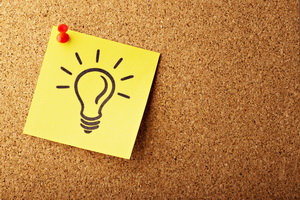
Many manufacturers overcome challenges in product development by pursuing aggressive outsourcing strategies. Outsourcing aspects of your production process saves money and improves turnaround times, and doing so also allows qualified experts to handle the manufacturing while you dedicate more resources to branding and R&D.
Understanding Product Development
What is Product Development?
Product development is an umbrella term that encompasses an item’s journey through conceptualization, design, production, and sales. During product development, business owners identify new or underexploited niches in the market and attempts to design a product that satisfies untapped demand. In other cases, manufacturers find ways to improve existing products to adapt to the market’s changing. Product development can last anywhere from a few short weeks toyears as manufacturers fine-tune their products.
Signs You Need a New Product
You can usually tell when it’s time to embark on a new product development process. For one example, if sales are steadily decreasing for no particular reason, it may be a sign that consumers have grown too accustomed to your product and it needs a refresh.
Other metrics could also signal the need to update your product offerings, such as:
The Different Product Development Steps
The product development process consists of numerous steps:
Many of the earlier steps occur in-house or through collaboration with consultants. Gradually, as you branch out toward actual development, test marketing, and commercialization, you may bring in external designers, other manufacturers, and even members of the public (to help with product testing).
Product Development Outsourcing
Outsourcing Versus In-House Product Development
Outsourcing refers to when businesses reach a formal agreement with a third party to perform some of the processes that the client business would otherwise handle. Service offerings can vary widely—businesses outsource everything from manufacturing to payroll processing to tech support and customer services.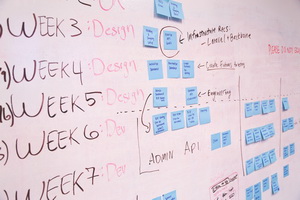
If you’ve never done it before, outsourcing your processes can seem like a daunting task, and in-house development definitely comes with several advantages. In-house development projects offer you complete control over the creation and delivery of your product, and they allow you to gain more hands-on experience with the ins and outs of your processes.
However, in-house production also takes time and resources away from tasks more central to your business. An external manufacturer usually has the specific expertise to build one aspect of your end product really well, using material sourcing and time-saving techniques that they’ve honed over years of experience. Additionally, because they usually work with multiple clients at once, external firms can usually offer lower costs for their services than than what can be achieved in-house.
Should You Outsource?
Outsourcing doesn’t make sense for every project, but for those building large or complex materials, it can be an excellent way to speed the production process. Outsourcing is also a great way to develop new ideas—a fresh set of eyes may see more efficient ways to improve your product.
Developing a Product: Five Tips for Outsourcing
In short, it’s important to keep the following tips in mind when implementing a comprehensive outsourcing plan:
Develop Your Product with Paragon Innovations
Paragon is proud to offer our clients a variety of outsourcing services. We leverage a tiered product development process aimed at meeting your requirements regardless of your development stage. We design all products with numerous quality assurance procedures in mind, and we can tailor our processes to meet FDA requirements as needed.
For those interested in a more complete overview of our services, download our Outsourcing Guide for an outline of the process. In addition, check out our Outsourcing Frequently Asked Questions.
If you would like to learn more about how teaming up with Paragon will benefit your next project, contact us today to request a free quote.
What Are IoT Devices and How Will They Impact Your Business?
What Are IoT Devices and How Will They Impact Your Business?
As technology continues to advance in cloud computing and network integration, it’s becoming more popular than ever to build devices that are compatible with the Internet of Things. According to Business Insider, the Internet of Things (or IoT) describes “the connection of devices (other than typical fare such as computers and smartphones) to the Internet. Cars, kitchen appliances, and even heart monitors can all be connected through the IoT.”
The IoT’s potential is limited only by the amount of electronic devices you can make. Analysts expect that we’ll have over 75 billion types of IoT devices by 2025, vastly more than their current finding that only 0.06% of all devices that could leverage IoT actually do so.
As such, we’re standing on the cusp of a bonanza of IoT investment and integration. But what exactly does it mean to hook a device up to the Internet of Things? In this post, we explore the diverse benefits that can spring from developing machine intelligence in your products.
IoT Devices: What Are They, How Do They Work, and How Do They Benefit Your Bottom Line?
What are IoT devices? The answer is simple: if your device connects to the internet, it’s part of the IoT. Many of the machines and appliances we use every day can be modified to connect to the Internet of Things, including: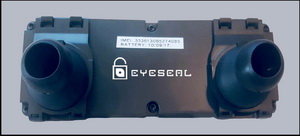
IoT products come with many built-in capabilities that monitor usage levels, sense environmental conditions, and analyze data received via the Internet to create alerts and notifications.
This means that IoT devices can anticipate unexpected events and help you navigate around them. For example, imagine that you have a “smart” alarm clock. This alarm clock normally wakes you up at 7:30 AM to catch your morning train. However, as the clock can monitor your train’s status via the internet, it can modify its behavior if anything affects this routine. If track repairs cancel the train, the clock automatically finds another train that works with your schedule and will wake you up in time for the new one, saving you from any unpleasant surprises in the morning.
How IoT Technology Can Impact Your Business
IoT devices benefit your business in a variety of ways, helping you optimize inventory tracking and management, analyze customer behavior, and improve troubleshooting and product testing processes.
For instance: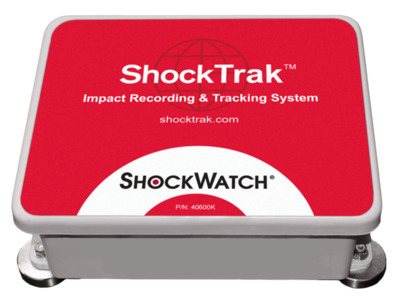
Not only will these benefits result in more affordable, high-tech, and effective products for consumers, but integrating the products themselves with the IoT will improve their efficiency and marketability. Cars that can self-diagnose engine problems will reduce headaches for drivers in need of repairs, microwaves that can detect when foods and liquids are fully cooked will result in better meals and less energy use, and home lighting systems that can automatically calibrate the appropriate light levels for every time of day will effortlessly create the perfect ambiance for homes and businesses.
Use the Internet of Things to Your Advantage at Paragon Innovations
We at Paragon Innovations are leading the way in integrating existing devices with new and exciting technologies. We’re currently on the brink of a new era in technological innovation, and we want to work with you to realize the full potential of the Internet of Things.
If you would like to learn more about how we can help make your next project a “smart” project, contact us today.
Continued CDS/Astech Development Success
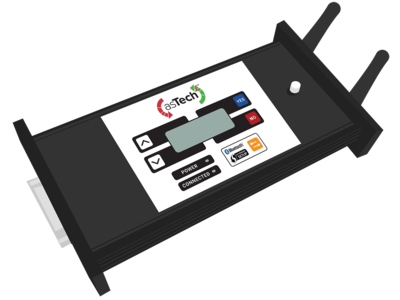
Paragon has continued development for CDS/Astech over the last 5+ years.
Michael Edgar, Director of Research and Development for asTtech recently said, "asTech has enlisted Paragon Innovations, Inc since our first revision to fulfill our hardware and firmware needs and have not been disappointed. As our product and demands grew, Paragon continually showed attentiveness to our needs and provided critical support in our time(s) of need. Their entire team and process has allowed us to focus on our business needs while knowing that our embedded development needs were met."

